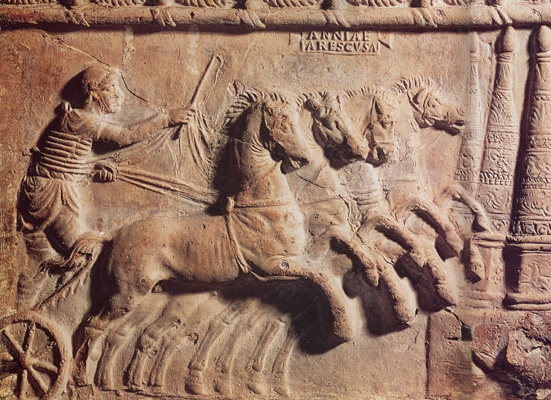

As can be seen in this detail from a terracotta "Campana" plaque, the charioteer wears a tunic with leather straps, tightly bound to protect the chest, around which the reins were tightly wrapped to provide greater leverage in slowing the horses through the turns. The left hand was used to correct the course and the right hand to wield a whip. A stiff leather helmet protected the head.
Such decorative plaques were named after Giorgio Campana, who published the first study of them in the mid-nineteenth century. This example is in the British Museum (Townley Collection), the maker's name appearing in a panel above the horses.